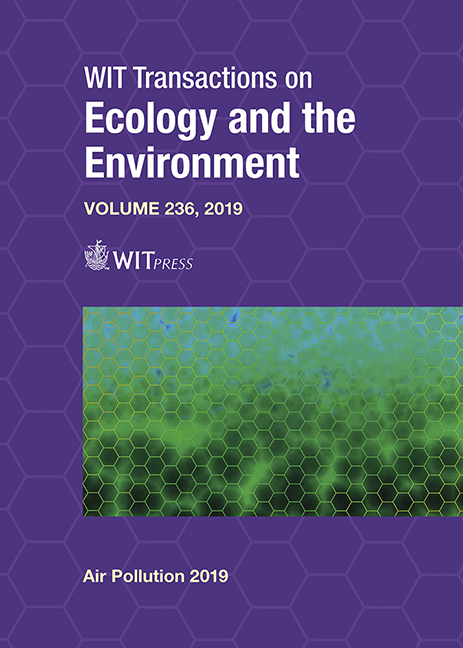INFLUENCE OF KEY PARAMETERS ON THE REMOVAL EFFICIENCY OF AIR POLLUTANTS BY A BIOTRICKLING FILTER
Price
Free (open access)
Transaction
Volume
236
Pages
10
Page Range
297 - 306
Published
2019
Size
489 kb
Paper DOI
10.2495/AIR190291
Copyright
WIT Press
Author(s)
VINCENZO TORRETTA, MARCO SCHIAVON, PAOLO CARUSON, MARCO RAGAZZI
Abstract
A chemical scrubber followed by a biotrickling filter (BTF) was integrated in the air treatment line of a composting plant, originally equipped with an open-bed biofilter. Such integration is motivated by the poor performance of the biofilter in the removal of odorants like ammonia (NH3), sulphides and volatile organic compounds (VOCs). The scrubber and BTF units were monitored during two summer periods in two consecutive years (08.10.2016–09.13.2016 and 07.26.2017–09.20.2017) by analysing key parameters such as airflow rate, metabolite concentrations and, especially, the temperature of the circulation water of the BTF. During the second period, a 17% decrease in the waste-gas flow rate and a consequent increase in the waste-gas temperature were measured. The control of temperature proved to be crucial for the removal of the three groups of pollutants investigated in this study. The occurrence of thermophilic conditions in the BTF inhibited nitrification and generally lowered VOC biodegradation. The increased NH3 removal rate that was observed during the second period can only be explained with the increase in the residence time in the scrubber, as an analysis of the nitrate and ammonium concentrations in the circulation water of the BTF revealed. While adverse temperature conditions may be compensated by increased residence time for NH3, temperature is crucial for VOCs, which were only slightly affected by the increased residence time. On the other hand, a relative increasing trend of VOC removal rate in the BTF was observed in the thermophilic range. In addition, the removal efficiency of dimethyl sulphide clearly increased during the second period. More research is needed to understand if such a positive effect can be related to the increased residence time in the pre-treatment line or if thermophilic conditions can help the biodegradation of VOCs and sulphides.
Keywords
biofiltration, air pollution control, absorption, volatile organic compounds, dimethyl sulphide, ammonia





